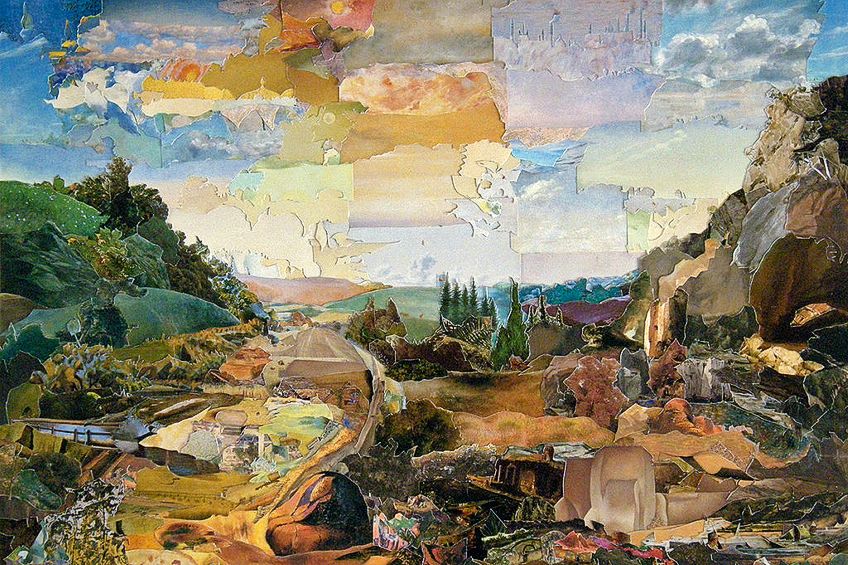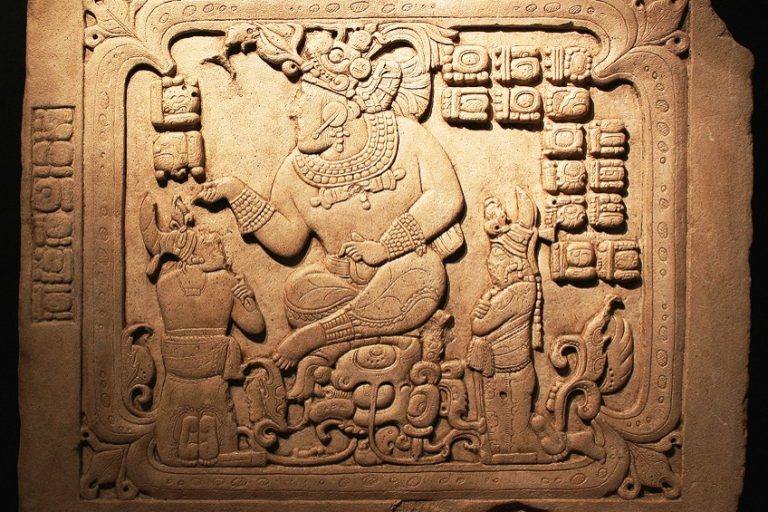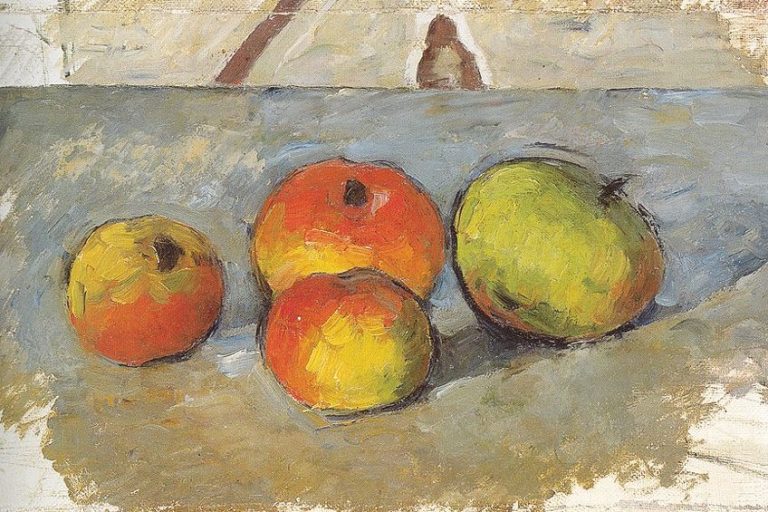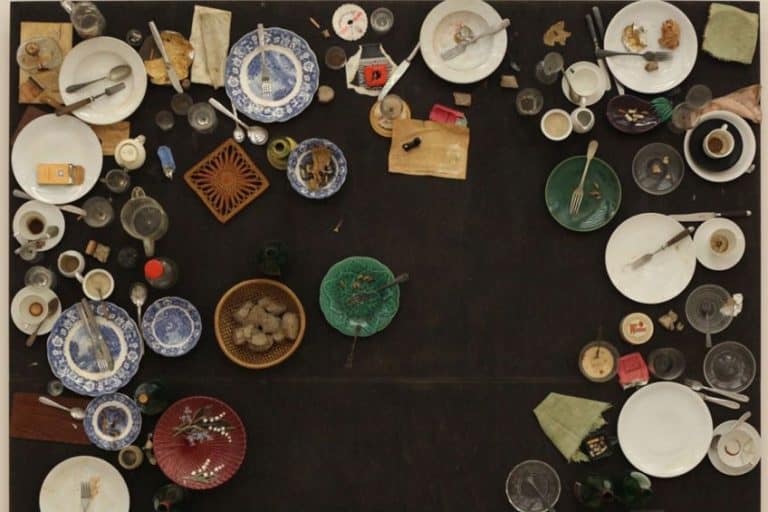Collage Art – A History of Collage as an Artistic Medium
Appearing at the beginning of the 20th century, Collage Art began as a form of novelty art. This style explored the incorporation of many different materials that were often glued together, to create a cutting-edge style of craft art that had never been seen before. The aesthetic surrounding Collage Art was described as being pieced together, which enabled the production of utterly unique creations. Viewed under the guise of mixed media, Collage Art typically explored the highs and lows that encompassed the elements of formal art.
The History of Collage Art: An Introduction
Becoming a distinctive part of Modern Art in the early 20th century, Collage Art described the technique of assemblage that was used within this artistic creation of a new style. Despite the roots of Collage Art being traced back hundreds of years, this art form made a dramatic resurgence and was said to exist as an art form of novelty due to its one-of-a-kind aesthetic. Starting in the Modernist period, before being propelled into the contemporary art world, Collage Art has endured many changes as more artists began to explore it.
Taken from the French word coller, which means to either stick together or glue, the term “collage” described the process that was taken when creating Collage Art. Collage within art was first coined by Cubist artists Georges Braque and Pablo Picasso, who were the first pioneers of this movement. Existing as the first two artists who worked with different mediums in an attempt to make art, Braque and Picasso began their cutting-edge assemblages around 1910.
The first example of Collage Art appeared within Braque’s 1912 artwork titled Fruit Dish and Glass, where he glued down imitation wood-grained wallpaper. Following in Braque’s footsteps, Picasso began to add newsprint to his oil paintings which made reference to the current events that were taking place, as well as gluing rope around the edge of some canvases. Pioneers of the Collage Art movement, both Braque and Picasso composed their works from glued bits of colored paper, newspaper, and found objects.
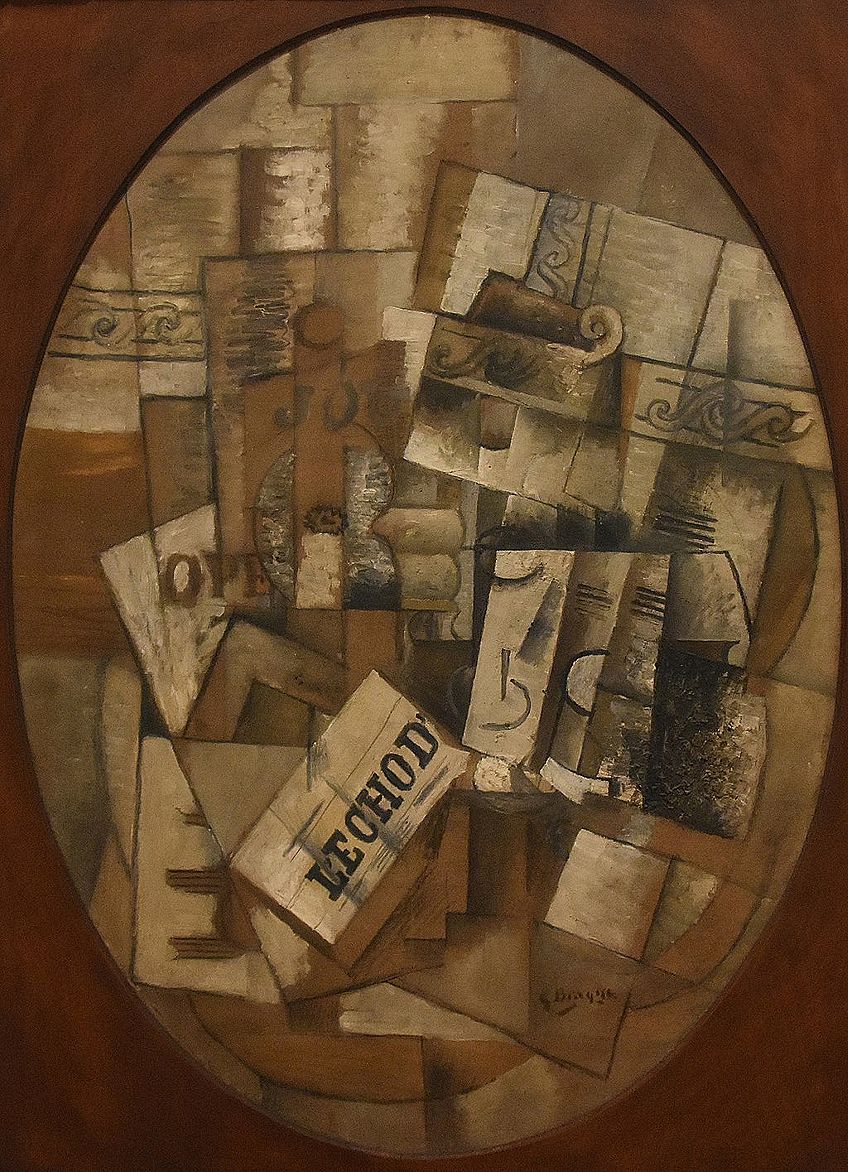
A variety of materials, such as paper, cloth, paint, found objects, magazine and newspaper clippings, and sections of other artworks and text were incorporated together before being glued onto a canvas or board to create an entirely new composition. This style essentially brought forth the production of a different form of art, which allowed new types of artworks to be created. These materials were considered to be such a bold intermingling of artistic elements that the return of the collage medium was thought to revolutionize modern art.
Collage Art has been referred to as one form of mixed media art, as many different types exist. The process of collage was viewed as a mixture of both elevated and diminished elements that existed within formal art, with this mixture referring to the traditional definition of art as well as art that was produced for mass consumption and commercial use. Thus, Collage Art existed as a newer form of Modern art due to its combination of elements, which saw many artists employing this popular medium.
From its early roots in both Dadaism and Modernism, Collage Art existed as a medium that was as diverse as it was politically motivated. Due to its emergence after World War One, Art Collage allowed artists to experiment with existing materials such as newsprint, magazines, tickets, propaganda, and photographs in order to create new works of art. These materials were ripped apart and reassembled into visually powerful fusions that interacted together in such a unique way that added to the avant-garde process that encompassed Collage Art.

Through incorporating a variety of materials within an artwork, Collage Art successfully subverted traditional definitions of what was important art. The incorporation of these materials allowed collage artwork to frankly question society’s tendency to detach fine art from ordinary objects through juxtaposing elements of high and low culture within works. Whether these compositions were purposeful or random, the comparison created by the contrast of different elements has long captivated the attention of artists.
Since images have the ability to take on new meanings within different contexts, the art of collage was able to easily overturn traditional meanings that were typically associated with art, as well as imply multiple meanings simultaneously. In doing so, Collage Art created works that did not simply fit into a single and rigid analysis. The style of collage held much artistic potential, which in turn made the movement incredibly accessible for all types of artists.
Many innovative artists ranging from the modernism and contemporary era have made use of collage to query the supposedly traditional duty of the artist within the works they created. Through using found and mass-produced objects, images, and materials that were not made by the artists themselves, Collage Art was able to undermine the customary importance that was placed on an artist’s hand in the making of their original work.
Thus, Collage Art was adopted to undermine the idea of importance when composing unique and avant-garde works.
Collage Art Influences and Style
Collage describes the technique of creating an artwork through combining and gluing together a wide range of materials onto a surface like a canvas or board. However, the style of collage differs depending on the techniques and materials that an artist uses. For example, photomontage made exclusive use of photos in their artworks; decoupage involved gluing cut colored paper or images onto an object; assemblage referred to a three-dimensional collection of objects, and papiers collés described collages that were made only from bits of paper.
Precursors of Collage Art
The techniques associated with Collage Art were first used in China around 200 BC when paper was invented. The initial style of collage began to slowly come into fashion within 10th century Japan when calligraphers started to utilize glued paper and texts on surfaces when writing poetry. During the 15th and 16th centuries within Europe, collage techniques were used in Gothic cathedrals when applying gold leaf panels, as well as gemstones and other valuable metals that were applied to religious imagery and icons.
Collage was also seen as a method of art undertaken by hobbyists for a period of time, as this style was used in items of memorabilia, such as photo albums, and books within the 19th century. However, many institutions have attributed the history of collage and its official beginning within the art sphere to be dated around 1912, when both Picasso and Braque began to experiment with this style in their artworks.

Associated Movements
Within the development and history of Collage Art, many other artistic movements had significant influence. The techniques of collage, which took inspiration from the Cubism movement, became a principal element within both the Dada and Surrealist periods of art. In addition to these areas of art, collage was later represented in the Neo-Dada and Pop Art movement, as different collage techniques were used to explore various subject matters.
Cubism
Within the contemporary sense, collage artwork was said to begin with Cubist painters Georges Braque and Pablo Picasso. Cubist collages began experimenting with fragments of different and completely unrelated subject matter to achieve a deconstructed appearance and form. Despite Cubism being mainly associated with paintings, the techniques that Braque and Picasso experimented with within their works allowed them to create collages that were essentially Cubist in nature.
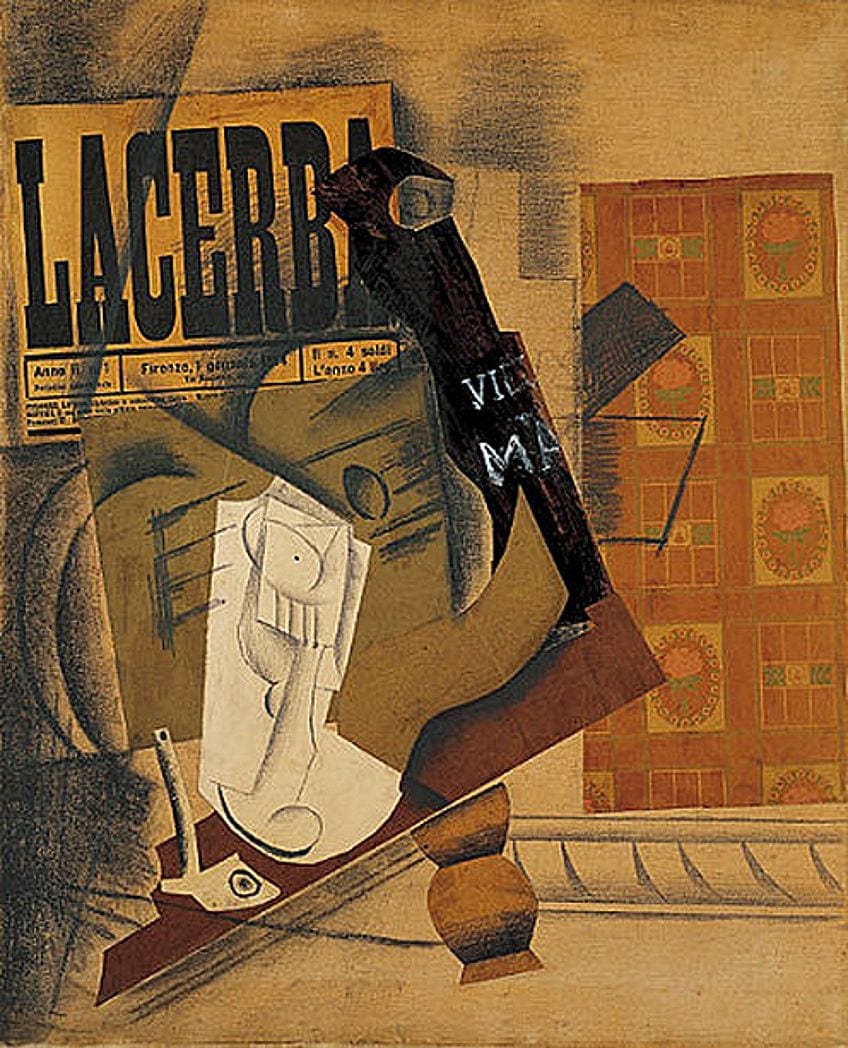
Cubism was able to pair perfectly with the Collage Art movement, as it allowed artists to selectively piece together a picture of their choice from a range of different elements. Due to this style, collage artwork had the ability to refrain from appearing flat, unlike traditional two-dimensional painting. Thus, Cubist collages differ significantly from previous Cubist works, as the added element of collage was able to draw out areas of dimensionality and perspective.
Materials that were frequently utilized in collages by Cubist artists were painted cut-outs, patterned paper, and newsprint. Picasso demonstrated the use of these elements within his 1913 artwork titled Bottle of Vieux Marc, Glass, Guitar and Newspaper, in which he played around with these materials on his artwork. In addition to this work, Braque represented the typical materials used in his Violin and Pipe artwork that he created in 1913.
Dadaism
The Dada movement was inspired by the cutting-edge work that was produced by Picasso and Braque, with artists practicing within this group beginning to play around with collage in the 1920s. Dadaists strayed away from the favored still-life subject matter of Cubism and instead opted to create collages that integrated a wide range of imagery. In doing so, the subject matter in Dada collages typically tended to represent reimagined portraits and figures that were ingrained in fantasy.
The Dada movement arose due to the political turmoil that had engulfed Europe after the First World War, with these anxieties manifesting themselves in the Dadaist collages that were created. Notable artists like Hans Arp, who arrived in Paris in 1914 to avoid being drafted into the German military, saw Picasso and Braque’s collages which ultimately inspired him to create his own. By 1915, Arp was exhibiting his Dadaist collage works in a gallery in Zurich.
Dadaists integrated more materials in their collages than their Cubist colleagues. Through combining a variety of elements, artists who created collages within the Dada movement were celebrated for their creative use of presumably worthless and frequently disregarded objects. These items often included magazine cut-outs, candy wrappers, tickets, and various three-dimensional ornaments. Through transforming transient ideas and materials into more refined pieces, Dadaists were able to call into question traditional perceptions of art.
Surrealism
In the wake of the Dada movement, Surrealism also stepped away from the still-life focus of Cubism in favor of experimenting with the elements of collage. Artists began to make extensive use of collage within their works to create fictitious, unusual, and dream-like scenes. Surrealists adapted the cut-and-paste technique of collage to produce works that seemed to be a product of one’s subconscious, which allowed truly unique pieces to be created.
These Surrealist collages made use of materials such as illustrations, photographs, colored paper, and paint to expand on the strange subject matter that was adopted within Dadaist collages. Thus, pieces that were reminiscent of strange dream sequences were created. This was seen in the works of Surrealist artists André Breton and Joseph Cornell, who made use of chaotic collage techniques to create coherent yet completely imaginary scenes.
Collage techniques that formed in the Dada era, such as photo-collage, relief assemblage, and overpainting, heavily influenced the development of Surrealist collages. Due to this influence, “collage” no longer solely implied works created with paper and glue. Surrealist artists began expressing an enchantment with text, which they began to incorporate within their collages. The first notable collages examples of this visual and verbal blend are demonstrated in the works of Max Ernst, who used collage in the late 1920s.
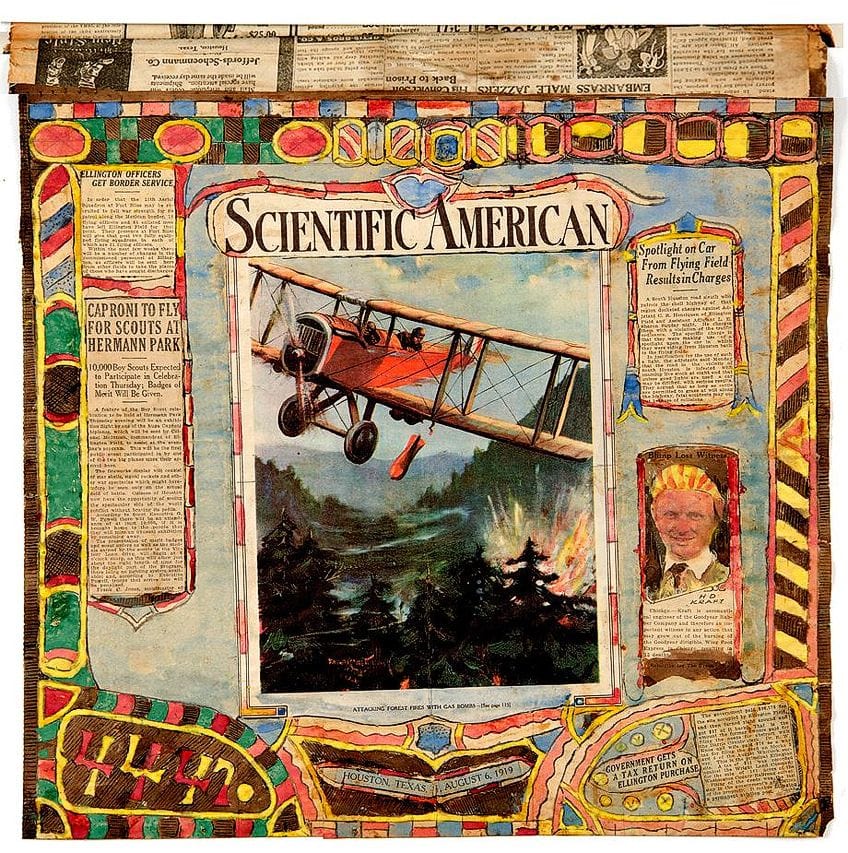
Collage as Commentary
The reason that the style of collage differs so significantly from other artistic styles is that it allowed artists the opportunity to add commentary to their work through the inclusion of common images and objects. In doing so, dimension was added to collages, which had the ability to further demonstrate the idea that was being carried forth.
Within contemporary art, many artists displayed a sudden interest in materials such as magazine and newspaper cut-outs, printed words, photographs, dirty cloths, and even metal pieces. This was due to the fact that the inclusion of these elements was able to successfully convey the criticisms and comments that the works implied, which was not previously possible in merely painted works.
The method of collage made the historical and political contexts of the work inseparable from one another, due to the fact that collages typically incorporated mass-produced images within their works. Thus, collage artwork existed as an influential means of social commentary, as its ability to question society’s assumptions and biases made it a worthwhile art form that was explored within a variety of other movements.
Notable Collage Artists and Their Collage Examples
Throughout Collage history, many significant collages painting pieces and works were made, which went on to greatly impact the direction of this cut-and-paste method of art creation. Some of the movement’s more well-known artists have been listed below, along with their iconic collage works that helped shape the techniques within the movement.
Henri Matisse (1869 – 1954)
Known for his various cut-out collages, Henri Matisse exhibited techniques of collage long after the initial success of the movement. During the late 1940s, Matisse made a significant change in his approach to his artistry and began working with paper during the last decade of both his career and life. Labeling his new creations as “cut-outs”, his seemingly simplistic works managed to evoke great complexity as he used gouache paint to stick down different pieces of colored paper in sequences that would often resemble elements of the natural world.
Within his cut-out types of collages, Matisse was most inspired by flowers, plants, animals, figures, and even abstract images. When creating his works, he arranged his cut-outs into energetic and colorful compositions that gradually grew in scale the more he continued to work. This style of artistic creation allowed Matisse to transcend the boundaries associated with traditional easel painting, as it gave him complete freedom to create art in whatever way he wanted to.
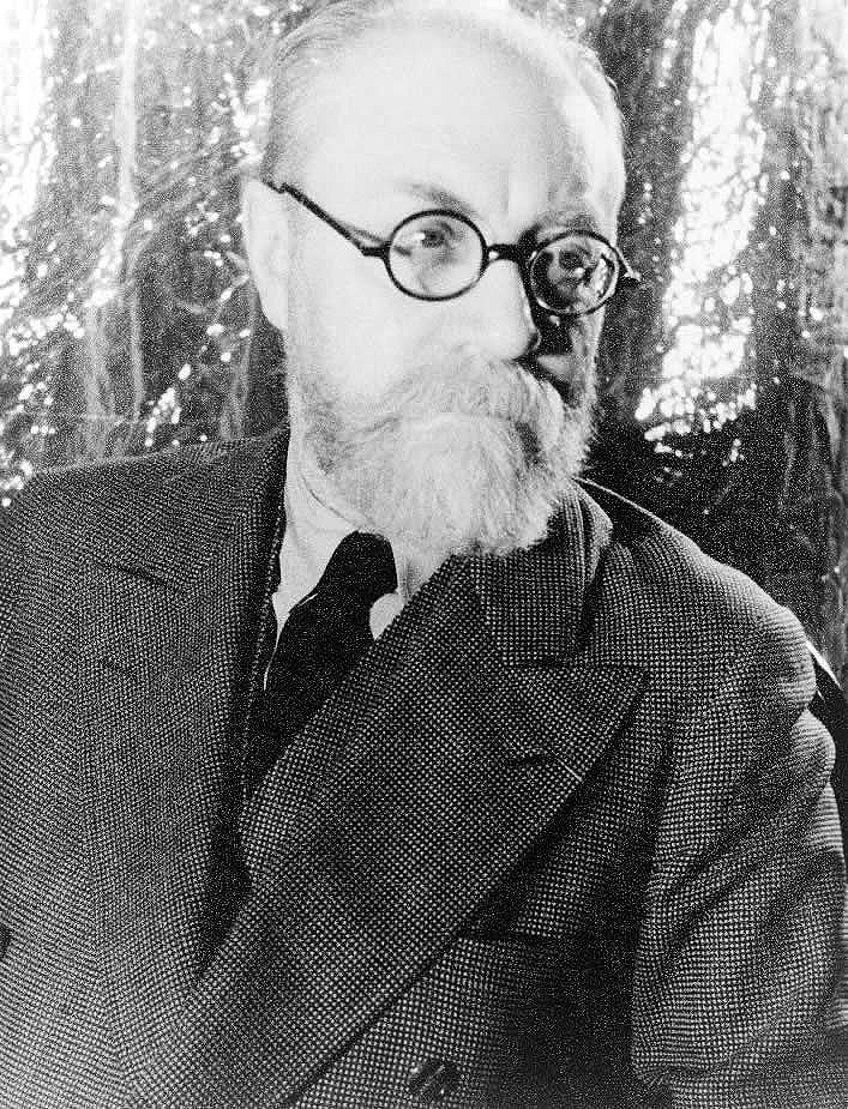
One of his notable cut-outs works that displayed his compositional style is his 1953 artwork titled The Sheaf. Matisse cut out a variety of colorful fronds that were thought to mimic a vivid fireworks display, which he then pasted onto a white background. This work, along with his other cut-out works, demonstrated some of Matisse’s most expressive creations from his career, as he was able to directly translate his intense emotions into pieces of paper simply by rearranging and pasting them in different compositions.
Within his later artworks, Matisse was able to explore spatial ambiguity through his simple interpretation of forms and shapes. Additionally, Matisse explored the illusion of depth within art through the colorful and lively artworks he created, as the intense hues of the paper he used managed to somewhat avoid coming across as simply two-dimensional.
Pablo Picasso (1881 – 1973)
Said to be one of the two original pioneers of the Art Collage styles, Pablo Picasso began to experiment with this technique around 1912. Inspired by the works created by Georges Braque, Picasso commenced an intense phase of collage-making, where he was said to have created almost a hundred collages in a short period. His early collage compositions made use of artificial wood-grain paper, text, pieces of cloth, instruments, and other objects.
Picasso created his collages with extreme precision to the point where he was likened to a doctor dissecting a cadaver. An example of one of the first Cubist collages made, as well as one of Picasso’s most notable collages, is Still Life with Chair Caning, created in 1912. Within this work, Picasso depicted various views of a café table holding different items, such as a napkin, a knife, a piece of fruit, and a wine glass.
What makes this work so interesting is that instead of painting a chair, Picasso stuck down a piece of oilcloth that was printed with the pattern of the chair caning. Additionally, he used a length of rope to frame the canvas. Both elements were utilized for their suggestive nature, as the cloth implied a physical chair, while the rope was a humorous take on the usually carved edge of a table.
By including the letters “Jou” at the top of his work, Picasso managed to seamlessly incorporate both wordplay and visual elements into his work. In doing so, his collages forced viewers to examine their own perceptions of what constituted an artwork, as well as the relationship that existed between formal art and common objects. Within his later works, Picasso mastered the style of collage as his pieces famously mixed high and low culture, which had a notable impact on the subsequent development of art within the 20th century.
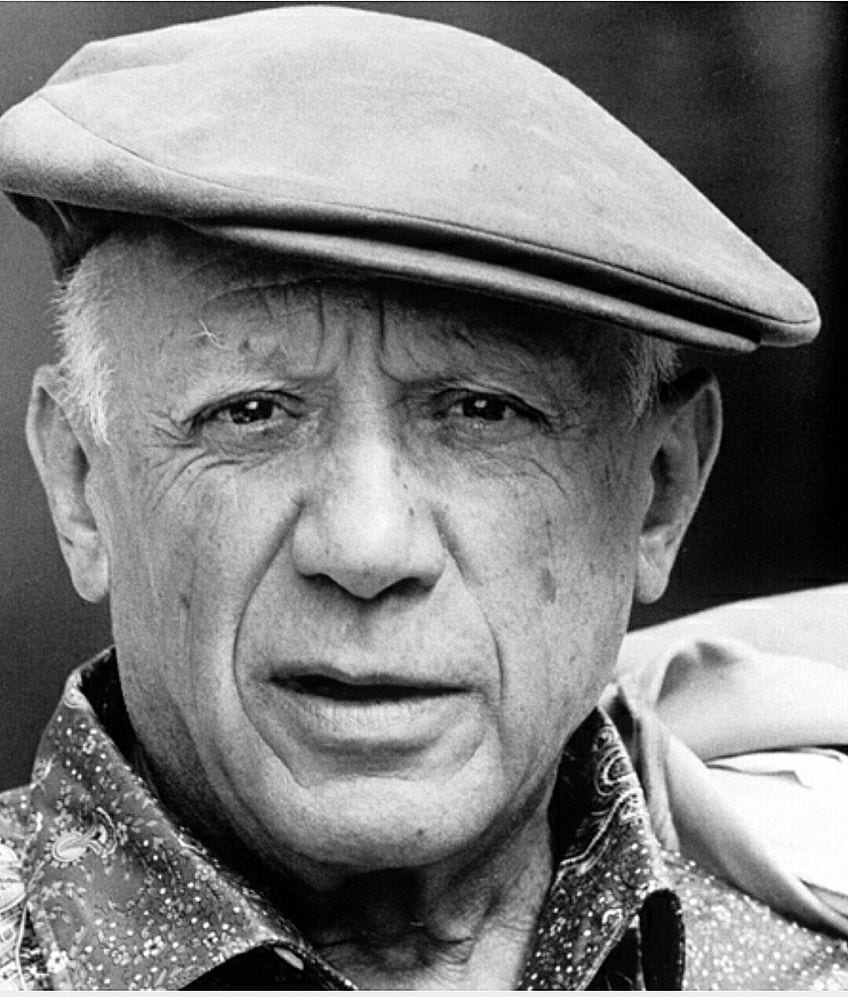
Georges Braque (1882 – 1963)
Creating Collage artwork at the same time as Picasso, Georges Braque is considered to be the other original pioneer of Collage Art. Within his seminal works, he combined pieces of fake wood wallpaper into his Cubist depictions of objects. After buying a roll of wood-grain wallpaper that he found in a shop window, Braque began to cut and paste this paper into his various drawings. It was this technique that he shared with Picasso, which prompted him to begin experimenting with collage alongside Braque.
Braque’s most influential example of collage art is his 1912 artwork titled Fruit Dish and Glass. Within this work, he stuck down pieces of the faux-wood wallpaper he found. In doing so, Braque created intersecting areas of collage elements and drawing within his work, which successfully called into question the formal ideas of perspective and space within art. Despite combining two seemingly juxtaposing elements, Braque’s work still suggested pieces of a tabletop and door.
Within Braque’s collage work, he explored the perception of space, which is what his Cubist works and the movement as a whole emphasized. While his addition of glued-on bits of wallpaper emphasized a shallower space to investigate the idea of space, this collage element allowed a greater exploration of the feeling of shapes and how they related to one another. Thus, the artistic methods Braque’s demonstrated in his collages became fundamental within the growth and expansion of the collage technique as a whole.

Hans Arp (1886 – 1966)
Another influential artist within the Collage Art movement was Hans Arp. His collages were essentially Dadaist in nature, as he was profoundly affected by the insanity and trauma of war. In the aftermath of the First World War, Dada artists felt that traditional social systems and the focus they placed on reason were responsible for the war, and because of this, they sought to create art that was free from all rational reason and deliberate tactics. Thus, the collages that Arp created embodied this way of thinking.
One of Arp’s most notable collage works, created in Zurich between 1916 and 1917, was Untitled (Collage with Squares Arranged according to the Law of Chance). This abstract collage was made up of a drawing that Arp had previously been working on but later disregarded. He then tore the pieces of blue and white paper into squares of various sizes, which he let fall to the floor. Once the paper had landed in arbitrary places, Arp pasted each scrap where it was to create a work that rested upon the random chance of gravity.
Through leaving the creation of this collage completely up to chance, Arp adhered to the new anti-art style that was established which avoided the traditional ideas of artistic talent. Arp’s Untitled collage was resolutely devoid of any further essence, as it simply consisted of torn scraps of paper that did not express any story or picture. However, it can be argued that Arp did not fully abandon control within this work, as the grid-like arrangement of his collage points to a form of structure that was subtly incorporated into the work.

Kurt Schwitters (1887 – 1948)
A significant contribution to the development of Collage Art was made by Kurt Schwitters, who began working on his influential collages in 1918. These works were made from paper and were constructed from rubbish that Schwitters had found on the street. His aim within his collage art was to create works that were able to embrace all different types and styles of art.
Existing as another Dada artist, Schwitters produced collages and assemblages under the title of “Merz”, which was a concept he formulated. This concept included works that combined all possible materials for purely artistic reasons, as he argued that common and found objects such as wood and plasterboard were equivalent to paint and other formal artistic elements. Thus, one of Schwitters’ most well-known works, created in 1921, included a variety of elements and was titled Merz Picture 32A, The Cherry Pie.
Within this multilayered artwork, Schwitters created this collage from different pieces of debris and objects that he had collected on the streets of his hometown in Germany. Schwitters’ method of collection differed vastly from the actual creation of this work, as he purposely chose a spot and meticulously glued and nailed down each item to a painted board. Areas of light and dark were created through the cut-outs, fabrics, and candy wrappers that were used, as the combination of these materials helped create a sense of pictorial depth.
When considering Merz Picture 32A, the chaotic nature of the different elements used by Schwitters helped evoke the idea of a bulletin board full of notes and cards. The inclusion of the child’s flashcard with the cherry helped blur the boundary that existed between ordinary objects and painting, in addition to adding to the transparent title of the work. Thus, Schwitters managed to create a collage that was completely disorganized and confusing, which subscribed to the Dada notions of the time.

Hannah Höch (1889 – 1978)
An influential female artist who experimented within the Collage Art movement was Hannah Höch, who created some of the most iconic works from the collage period. Höch started to create collages as a young girl and brought her child-like techniques of sticking the wrong head on the wrong body into her works as an adult. Within her works, Höch investigated gender roles and politics, as she created a commentary that challenged the way society was structured and viewed itself.
Her most well-known work was created in 1919 and was titled Cut with the Dada Kitchen Knife through the Last Weimar Beer-Belly Cultural Epoch in Germany. Höch’s work was very politically charged, as she repositioned images and text from the mass media to criticize the shortcomings of the Weimar German Government in the aftermath of the First World War.
Within her artwork, a seamless fusion is demonstrated between Höch’s ideas and techniques, as she made use of newspaper cut-outs to call into question the sexist and racist rules that supported Weimar Germany at the time. Höch’s work shows an image of Weimar society with its chief establishment and anti-establishment figures in and amongst industrialized disorder. This work was later exhibited at Berlin’s First International Dada Fair in 1920 and was a great success due to its transparency.
Höch created these photomontages for the remainder of her career, as she believed that there was no true limit on the types of materials that could be used to make up a collage. Through pioneering a form of art that made use of fashion magazine cut-outs, illustrated journals, and photography, Höch demonstrated that art could be made up from the ordinary chaos of modern life. Her work challenged racism and the place of women in 20th century society, which later influenced contemporary artists such as Cindy Sherman.

Collage Art in Other Forms
The development of Collage Art allowed the techniques that were created and refined to cross the boundaries of visual arts into other artistic spheres. Some of the most well-known areas, amongst many others, where elements of collage have been incorporated include architecture, music, and film.
Architecture
Although the pioneers of modern architecture used techniques that were closely related to collage, the theoretical concept of collage only became widely discussed after architects Colin Rowe and Fred Koetter published Collage City in 1978. While they were not advocating for collage in the graphic sense, Rowe and Koetter attempted to challenge the uniformity of Modernism through using the non-linear and disorganized ideals of collage.
Thus, collage within architecture was seen as a metaphor to revitalize the design practice.
Music
The style of collage has also made its way into the development of music. In the last half of the 20th century, the strides that were made in terms of the advancements in recording technology allowed innovative artists to start experimenting with the techniques of cutting and pasting within music production.
A notable group who made use of collage styles within their music was The Beatles. During the 1960s, English producer George Martin worked extensively with the band and created collages of the recordings from their albums. Additionally, in 1967 the cover for their Sgt. Pepper’s Lonely Hearts Club Band made great use of collage techniques.
Musical collages developed significantly throughout the latter part of the 20th century and by the 1990s and 200s, collage techniques became quite common within music. The most popular music styles that utilized a form of collage were rap, hip-hop, and electronic music.
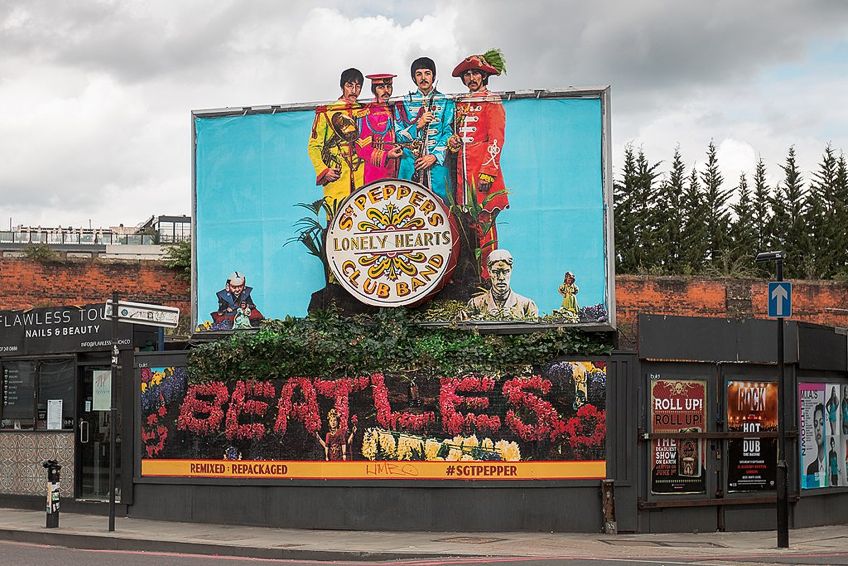
Film
Collage within film is best demonstrated when fictional scenes are interspersed with footage that has been sourced from a variety of locales, such as newsreels. The combination of different types of footage into a film carried various degrees of significance, which were dependent on the approach that the director took when filming. Collage within film can also encompass the physical collaging of materials onto the film strips. This technique was typical of Canadian filmmaker Arthur Lipsett, who was widely known for his collage film works.
The Legacy of Collage Art
Due to the many techniques and styles that made up the Collage Art movement, it is still easy to wonder: what is a collage in its entirety? Thus, it was said that collages painting and artworks were predominantly used to address a variety of issues, due to the technique’s ability for vast social commentary. Often within collage, artists would leave hints within their artworks that alluded to social and political concerns, as collage gave artists the chance to comment on issues through the use of familiar objects and images.
The legacy of Art Collage can be seen through the many young artists that have continued to work in this medium and have produced artworks. Collage Art had the ability to tell the story of each different artistic generation through the commentary it creates, which allows for truly fascinating works to be created. Within the contemporary area, collage has been viewed as the base of the digital experience due to its vast experimentation with layering and interjecting of different mediums to make up one work.
Tips for Making Your Own Collage
Have you ever wondered what is a collage and if anyone can make one? While this type of art creation may seem daunting at first due to its chaotic and disorganized nature, the art of collage is entirely possible for anyone to experiment with. However, before constructing your own collage, here are two tips to consider when starting out with this cut-and-paste style.
Collect and Create Your Own Source Material
When making your own collage, it will be beneficial to start developing a library of different collage materials for you to choose from. In doing so, you will be able to peruse through what you already have when starting a new collage before having to go out to buy new items.
Some old items that can be kept to utilize within collages at a later stage include old books, photographs, clothing, and recycled paper. Additionally, you can also choose to create your own unique source materials when working on your collage. This can be done by painting pieces of paper and then cutting them up into any shape you want.
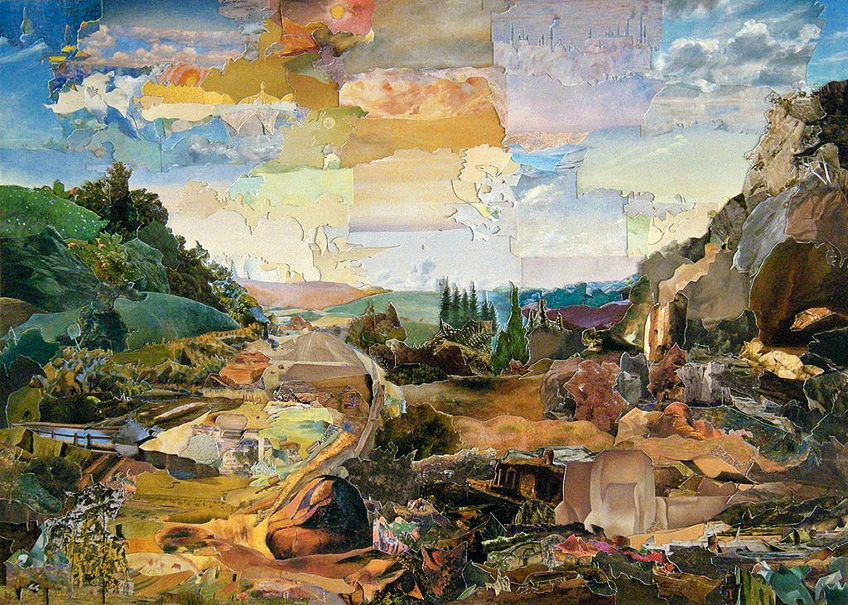
Organize Your Composition Prior to Gluing It Down
Before you permanently attach your materials to your backing, it would be wise to take some time out to plan your composition. Collage differs from two-dimensional mediums as allows you to arrange your elements in any way that you want to within your artwork. Take advantage of this medium’s flexibility by experimenting with different compositions before committing to the final look.
If you are a beginner to this medium, it is suggested to focus on one or two of the basic elements at first so as not to be overwhelmed. These elements include line, color, form, shape, or texture. If you find that your composition has too many elements, try restricting the number of materials you are working with until you are satisfied with the outcome.
Throughout Collage history, the works that were created were deeply referential of the political climate that existed at the time. Thus, the style of collage proved to be a suitable medium for social commentary, as it allowed artists to abandon the formal elements that had previously governed art in order to create works that honestly represented modern society. In essence, Collage Art blatantly questioned the ideals that made up an artwork, whilst offering a reflection on the change and upheaval that characterized the 20th century.
Isabella studied at the University of Cape Town in South Africa and graduated with a Bachelor of Arts majoring in English Literature & Language and Psychology. Throughout her undergraduate years, she took Art History as an additional subject and absolutely loved it. Building on from her art history knowledge that began in high school, art has always been a particular area of fascination for her. From learning about artworks previously unknown to her, or sharpening her existing understanding of specific works, the ability to continue learning within this interesting sphere excites her greatly.
Her focal points of interest in art history encompass profiling specific artists and art movements, as it is these areas where she is able to really dig deep into the rich narrative of the art world. Additionally, she particularly enjoys exploring the different artistic styles of the 20th century, as well as the important impact that female artists have had on the development of art history.
Learn more about Isabella Meyer and the Art in Context Team.
Cite this Article
Isabella, Meyer, “Collage Art – A History of Collage as an Artistic Medium.” Art in Context. April 8, 2021. URL: https://artincontext.org/collage-art/
Meyer, I. (2021, 8 April). Collage Art – A History of Collage as an Artistic Medium. Art in Context. https://artincontext.org/collage-art/
Meyer, Isabella. “Collage Art – A History of Collage as an Artistic Medium.” Art in Context, April 8, 2021. https://artincontext.org/collage-art/.


